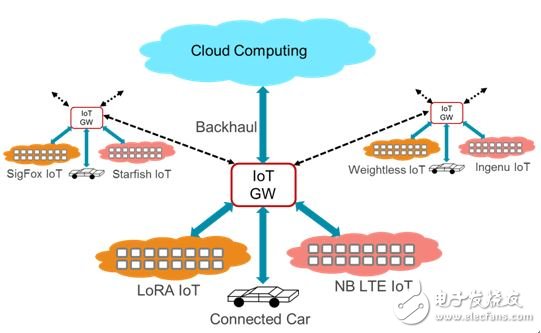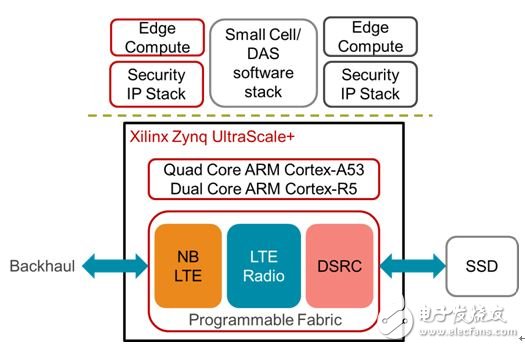The evolution of mobile broadband networks and related technologies is critical to meeting the growing demand for connectivity and bandwidth. Equally important is the introduction of appropriate functions and mechanisms to generate revenue through the network to sustain ongoing investment. Considering the currently deployed services, the LTE-based mobile broadband consumer market is becoming mature and saturated from a revenue perspective. The industry will deploy 5G technology by 2020, so new applications, use cases and markets must be developed to prepare for this. The Internet of Things (IoT) is evolving into a major growth point that caters to this need in a timely manner. IoT is now becoming a reality, with major operators reporting millions of connected devices in their networks. The proprietary low-power long-distance (LPWA) protocol is the first to offer IoT connectivity, and 3gpp is also competing with various solutions to make Release 13 the IoT industry standard protocol. The fast-rising IoT ecosystem has a solution to build low-cost IoT end nodes with battery life of more than 10 years.
It is expected that IoT networks and services will be deployed in large numbers in the next three to five years. In order to generate revenue from these IoT networks, both existing and new operators need to successfully address three issues. First, operators need to accept the existence of proprietary and standard IoT connections and prepare to mix IoT networks. Second, focusing on connectivity is not enough to enable IoT networks to achieve revenue. Data collected from millions of connected devices needs to be processed through comprehensive data analysis to drive new applications and use case development. IoT network security and reliability are the third important issue that determines the commercialization and wider adoption of the Internet of Things. Supporting multiple radio protocols, intelligent data collection/propagation between the cloud and connected devices, and programmable high-flexibility IoT gateways or hubs that ensure the latest secure links are key to solving these problems.
IoT requires low-power long-distance communication, asymmetric asynchronous low data rate connections, and low-cost end nodes with long battery life (greater than 10 years). The properties of IoT connections and devices may vary depending on the end market or application. The 5G Industry Forum divides IoT's application areas into two broad categories: low-energy large-scale machine communication and low-latency mission-critical machine type communication. Machine-to-machine communication is seen as an integral part of both application areas. One example of low-energy large-scale machine communication is a network of networked sensors and actuators that enable significant productivity in industries such as healthcare, shipping, agriculture, food, water and energy management, smart homes and buildings. And efficiency improvement. Connected wearables are an important part of this application case and are designed to improve every aspect of our lives. Equipment cost, battery life, ease of deployment, and efficient asynchronous communication are key requirements for low-energy, large-scale machine type communications. The typical data rate per IoT node is 100Kbps.
Low-latency machine communications include: industrial IoT, automotive, smart grid, traffic safety, and emergency response services. Reliability, flexibility and low latency are important components in this area. Typical data rates are: 100Kbps-1Mbps. Industrial IoT will enable mobile broadband networks to cover multiple vertical markets, opening up new high-yield channels for operators.
There are a number of dedicated low-power WAN technologies for IoT deployments such as LoRa, SigFox, Ingenu, Starfish, and Weightless. These technologies use a common frequency band. In the automotive sector, dedicated short-range communications (DSRC) (USA) and collaborative intelligent transmission systems (ITS) (where else) are emerging Vehicle to Everything (V2X) solutions. This is primarily for security applications. The DSRC uses 75MHz bandwidth and seven 10MHz channels in the 5.9GHz licensed spectrum. LTE provides a good framework for coordinating proprietary technologies and fragmented standards for scale, ease of deployment, and maintenance. LTE-M (for the machine to LTE expansion machine communication is part 3gpp RAN Release 12), and narrowband LTE (NB-LTE) (part 3gpp RAN Release 13) and extend the coverage GSM (EC-GSM) (GEREAN Part of Release 13) is a standardized technique for using licensed spectrum.

Figure 1: Conceptual diagram depicting the role of the IoT gateway in the IoT network
As shown in Figure 1, a flexible programmable IoT gateway or hub is distributed across the network and can play a key role. To support hybrid technology, IoT gateways need to support multiple radio protocols, depending on the installation location or service type. In order to coordinate existing proprietary technologies and evolving standards, system flexibility and agility are needed, which is the key to building economies of scale to enhance product revenues. In these gateways, it is not only necessary to implement intelligent data collection and propagation between the cloud and connected devices, but also to perform edge computing functions. In many IoT application cases, the data may be location-dependent and only meaningful in a short period of time. Many situations are subject to application latency and must use distributed data processing. Edge computing and local storage may be key to meeting the low latency requirements of the IoT gateway. The corresponding system functions are also needed in the gateway to protect the link to the connected device and the cloud.
In addition to solving critical system issues, the IoT Gateway can also be used as a test platform to run test projects for the latest IoT applications and use cases. Instead of waiting for the best solution or the formation of a complete ecosystem, operators can use the test platform to work closely with the supply chain to define system requirements. Well-defined, well-tested case studies and related business conclusions help guide the formation of optimal solutions and network evolution to maximize IoT's potential revenue. An IoT gateway with sufficient computing can also facilitate the establishment of a standard application development framework and development community for the open source industry. In addition, support for broadband LTE radios can enhance the integrated service level of some applications, such as the use of smartphones to control smart homes or mobile broadband connections for vehicles and passengers.

Figure 2: Xilinx Zynq UltraScale+ MPSoC All Programmable Platform as an Integrated IoT Gateway
Fully programmable FPGAs and SoCs provide a good solution to meet the stringent requirements of IoT gateways and IoT test platforms, with inherent flexibility to adapt to evolving standards, perform edge calculations, and protect links to demand Different radio resources. Figure 2 shows a conceptual block diagram of a flexible programmable IoT gateway using the Xilinx 16nm Zynq UltraScale+? MPSoC platform build. Does the Xilinx Zynq UltraScale+ platform have quad-core ARM running at 1.5GHz? The Cortex-A53, a dual-core ARM Cortex-R5 real-time processing unit with integrated peripherals and connectivity cores, as well as built-in advanced privacy, security and reliability features. It has a rich programmable architecture to accommodate multiple radio technologies as well as backhaul and local storage connections. Xilinx baseband, radio, base DSP, and connectivity IP can be used with the rich ARM software ecosystem to build a flexible, scalable IoT gateway application development framework. With inherent flexibility and programmability, the FPGA fabric can be easily upgraded to a radio system and is not constrained by the application stack on the integrated processor. Standardization on such platforms, promotion of open source industry standards application development frameworks, and running test case studies are all important steps in the development and deployment of new IoT services.
E-T5 Uv Lamp,Portable Uv Lamp,Home Uv Lamp,Sterilization Uv Lamp
t-smartlight , https://www.t-smartlight.com